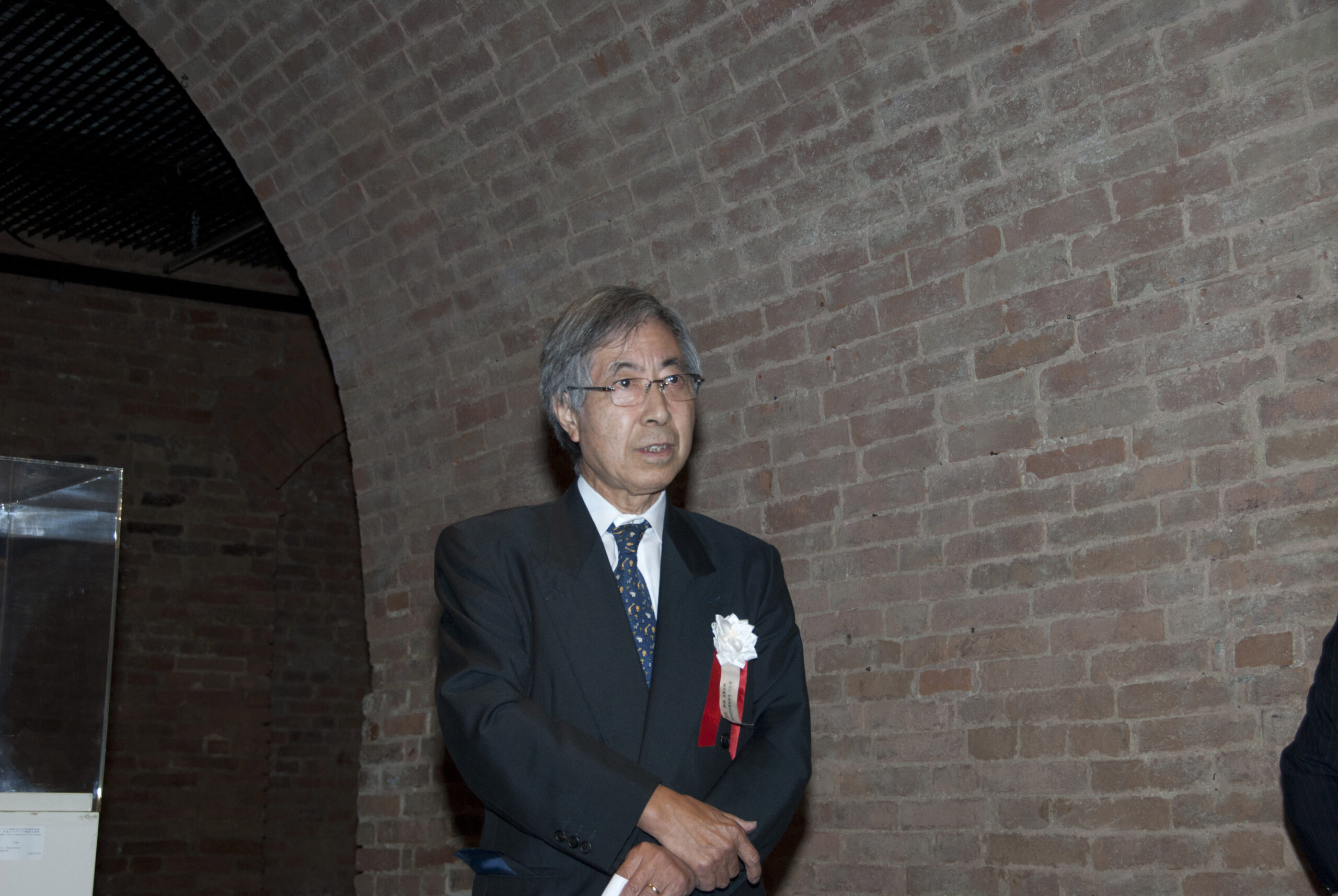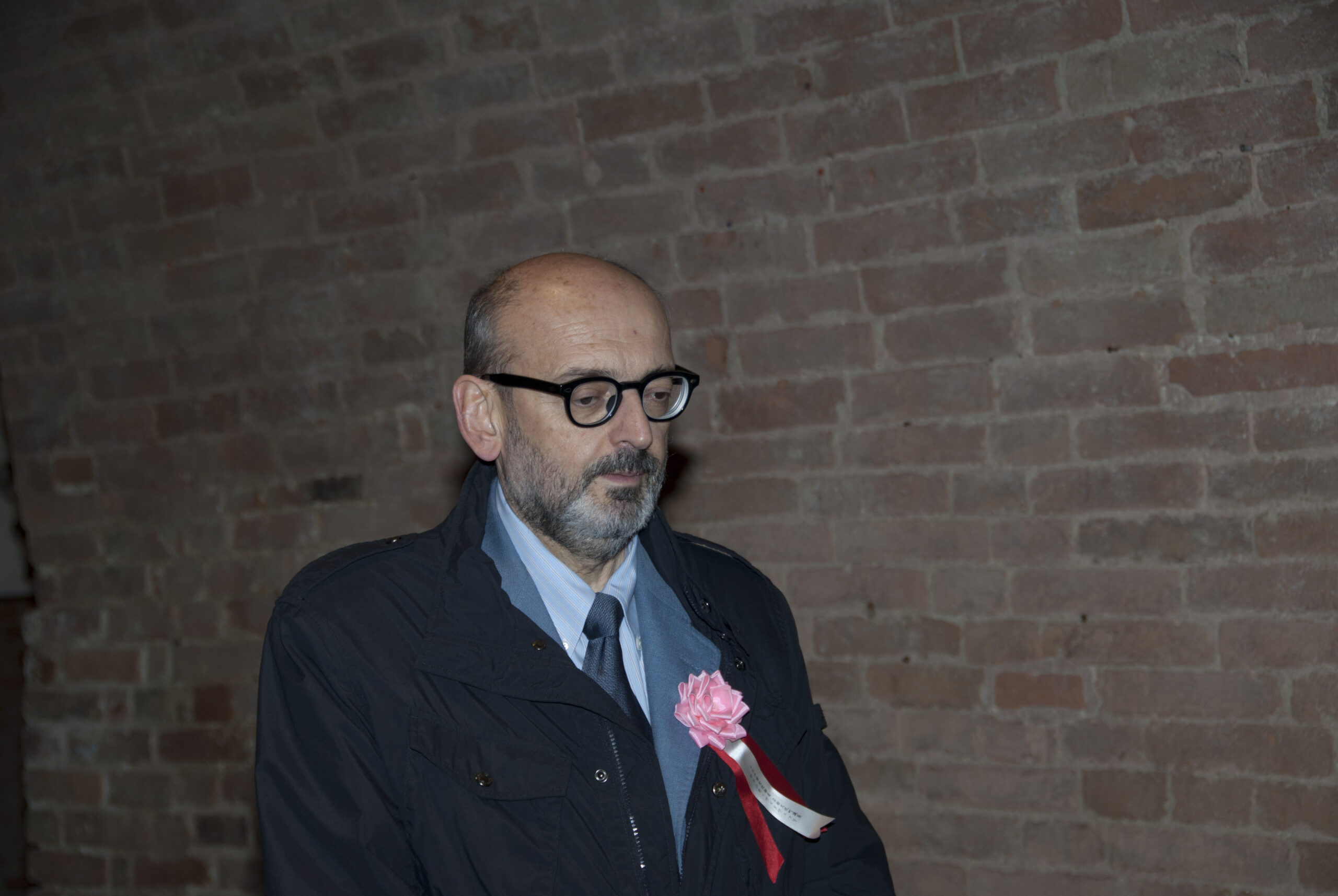Japan-Italy Educational Art Exhibition for Children
- 2015.07.01
- Activity
Official recognition of Siena City, 20th Anniversary for World Heritage in Siena. since 1995.
Exhibition of Japan-Italy Educational Art Exchange in Siena Museum
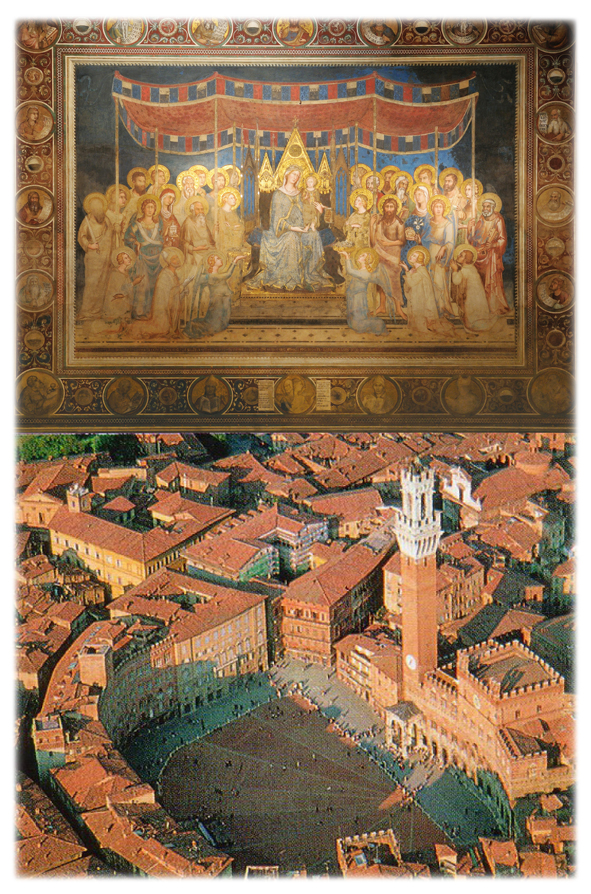
Day1
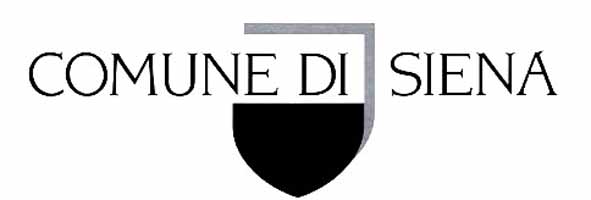 |
May 15, 2015
Opening Ceremony
Ahead of the 150th anniversary of the Treaty of Amity and Commerce between Italy and Japan in 2016, an exhibition entitled Japan – Italy Educational Art for Children was held at the Sienna Museum between the 15th and 19th of May.
Sienna is known as the city of the early Italian Renaissance and produced famous Early Renaissance artists such as Duccio di Buoninsegna and Simone Martini, who helped develop the High Renaissance period, and it goes without saying that it is a city of art, which served as the foundation of High Renaissance in Florence.
For example, there is a passage in the famous ‘The Lives of the Most Excellent Painters, Sculptors and Architects’ which states that even the master of Renaissance art Leonardo da Vinci had followed the example of the Sienese sculptor Jacopo della Quercia. Other Sienese artists such as Beccafumi are famous around the world, and an exhibition of Japanese art in the Mecca of art, Sienna, is something Japanese artists couldconsiderably be proud of.
Furthermore, the art session held as a human activity of art and education, which filled the most significant part of the art exchange, was carried out by Japanese artists and Sienese children at the Santa Maria della Scala.
|
Mr. Nobutoshi Akao
|
|
Mr. Massimo Vedovelli
|
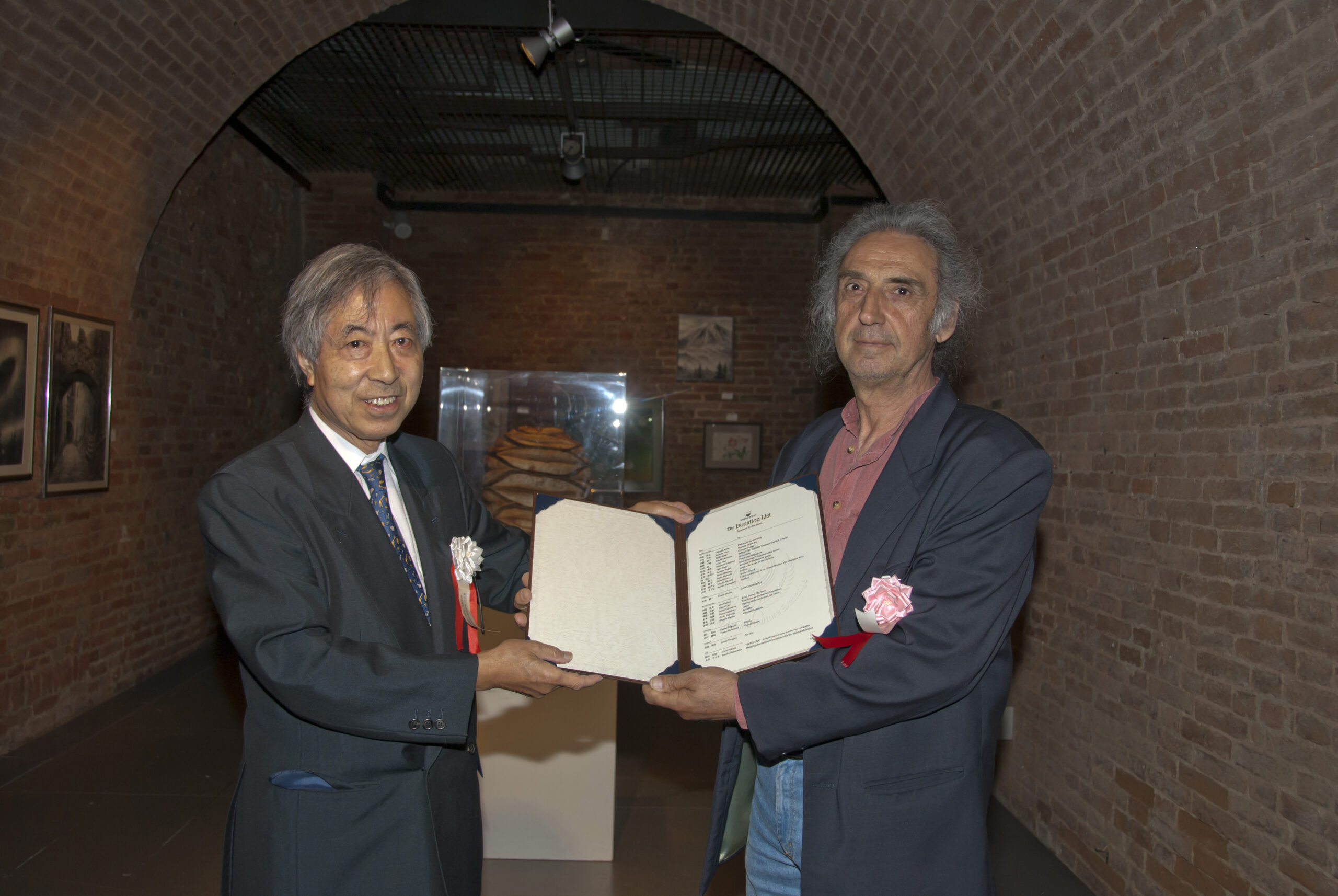 Mr. Nobutoshi Akao, Senior Advisor of WAC, Mr. Nobutoshi Akao, Senior Advisor of WAC,presented a list of collection of the “Exhibition of Japanese Art for Siena” to Mr. Daniele Sasson, Director of Prisma Multimedia Association.
|
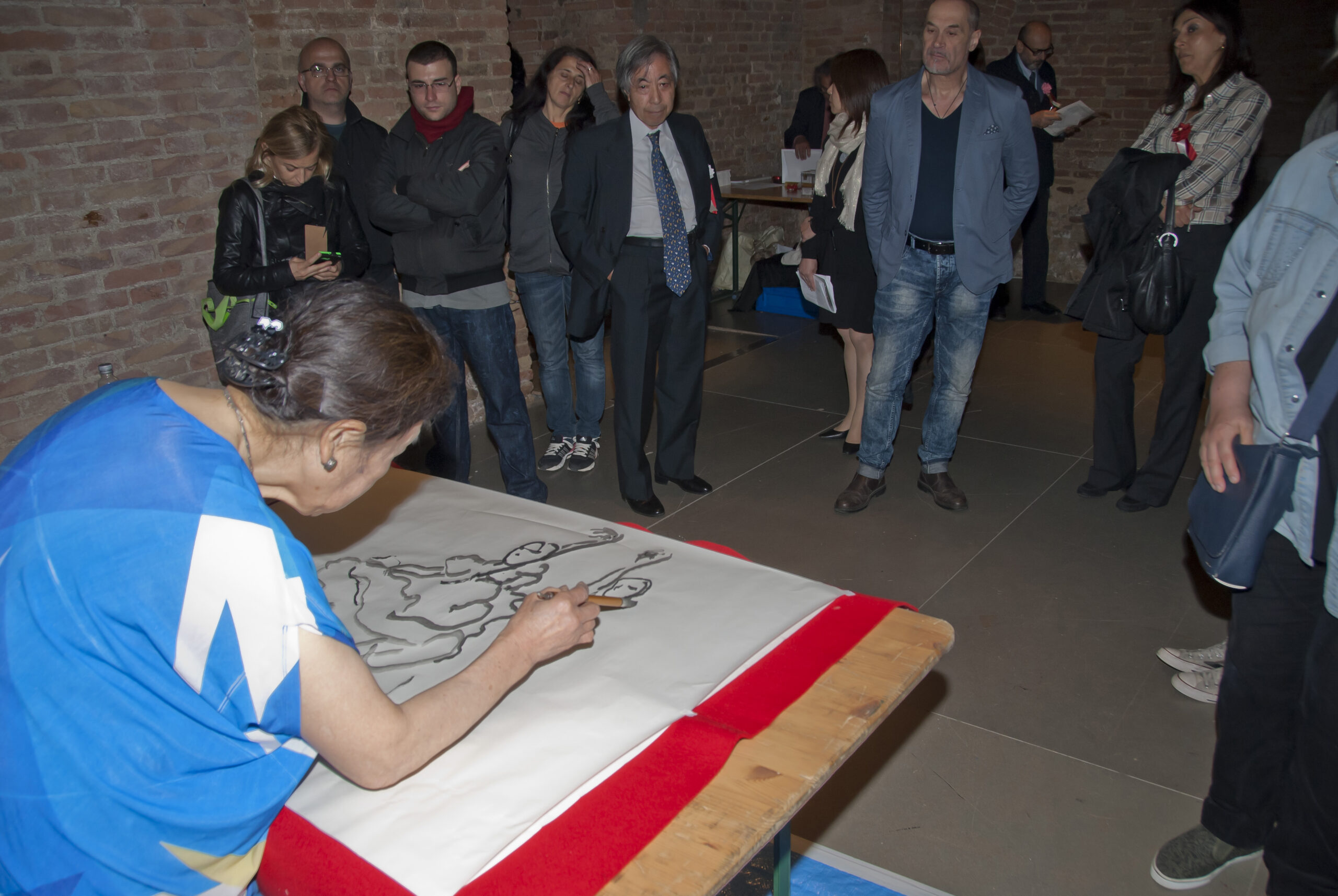
Demonstration by Japanese artist.

Day 2
May 16, 2015
Art Session
The art session with Sienese children was an exchange of art that transcended the boundaries of language. The Japanese artists and the children in the process of painting created a wordless language called art with their paintbrushes, without the aid of interpreters, and appeared to have conversed through painting, as the adults and children painted without uttering a word. The themes of painting were ‘fellowship’ and ‘friends’, and over 50 children were divided into three groups, and each of them painted on a 2-meter square vellum paper. The sight of the fusion of colours gradually harmonising, while the individualities of the children clashed, was very interesting to see. The finished works were richly colourful and dynamic, and made one realise that art is an important element of heart-to-heart interactions.
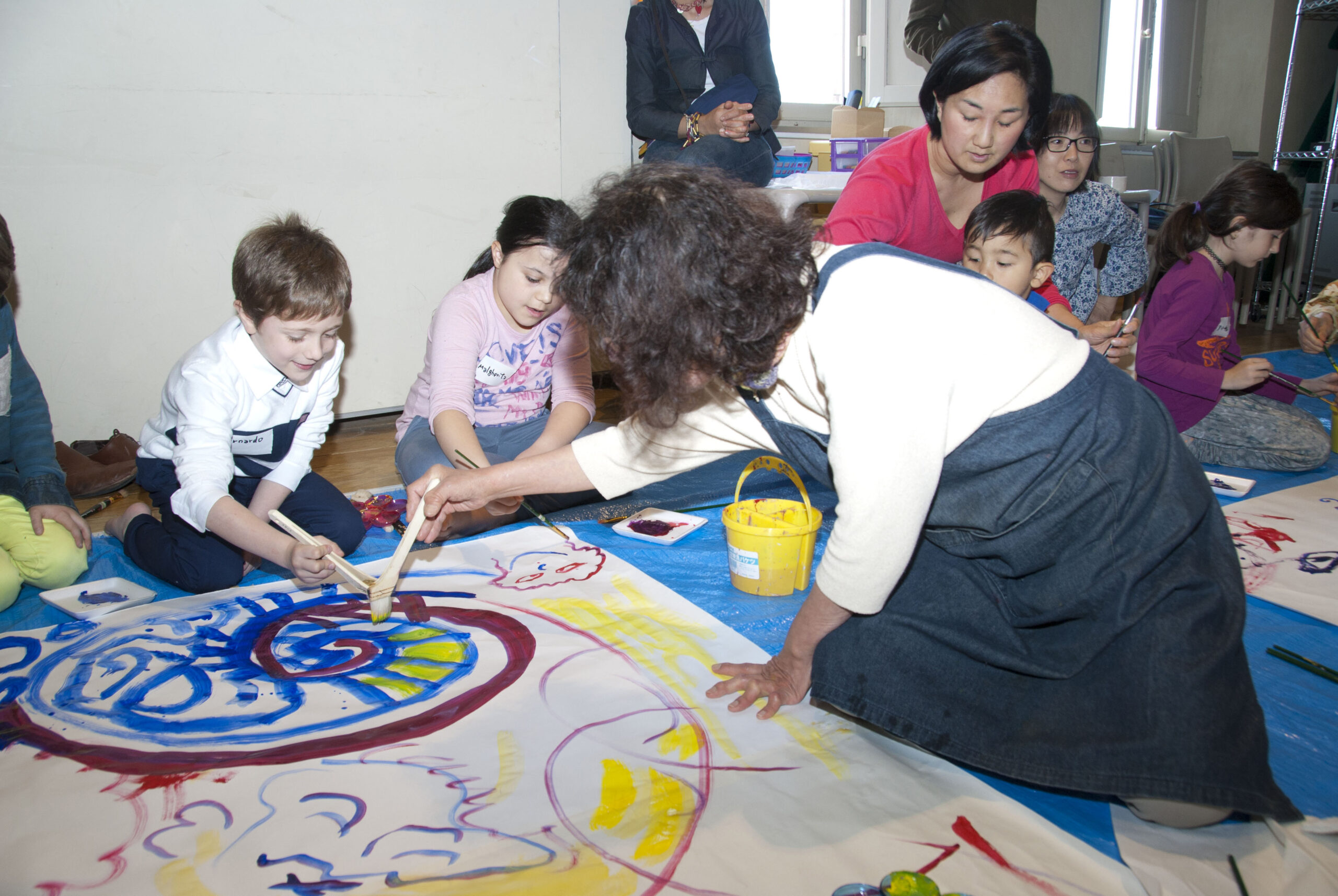 |
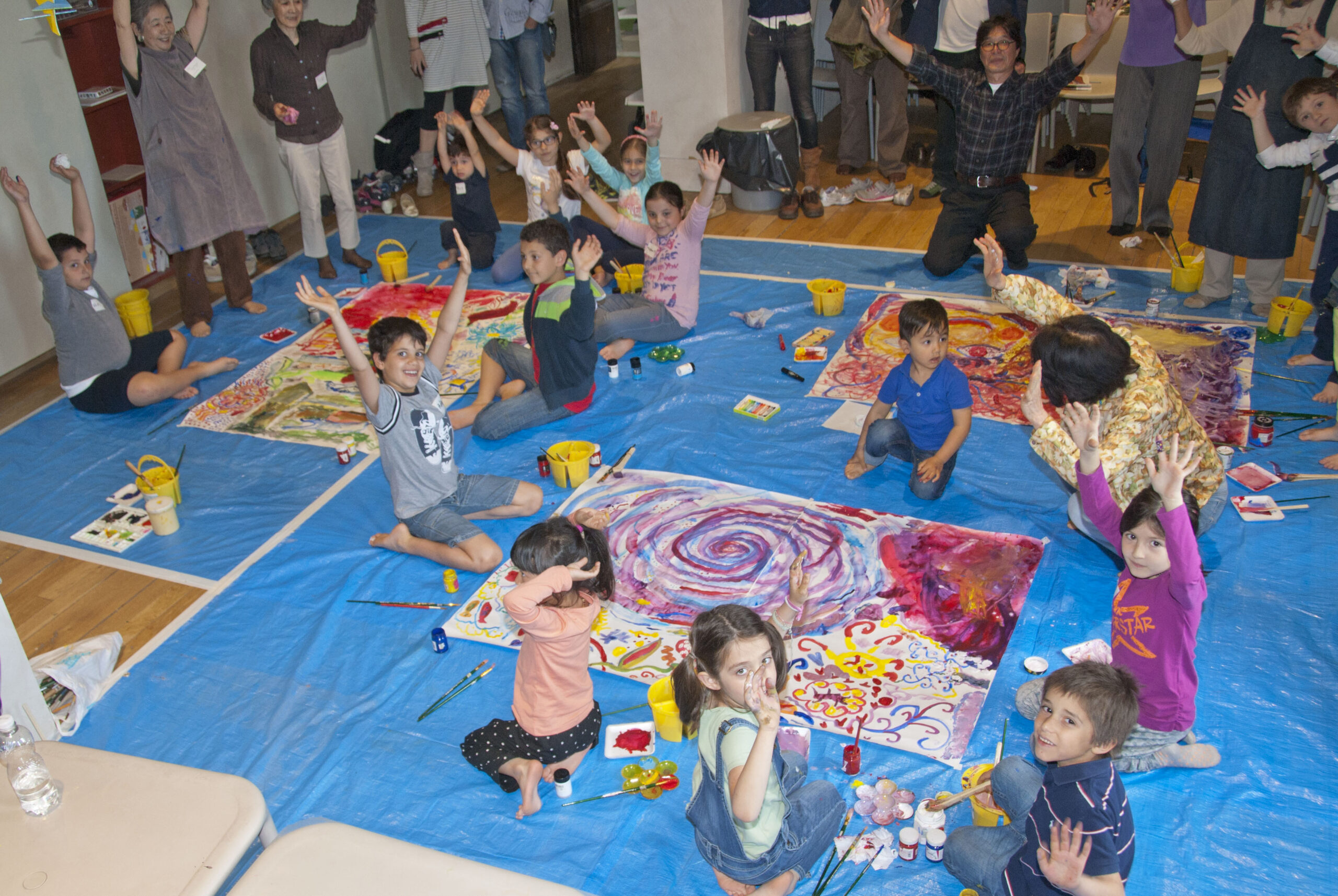 |
 |
Museum tour given by Dr. Piergiacomo Petrioli
A guided tour of Renaissance art was given by Dr. Piergiacomo Petrioli for the Japanese artists who had travelled to Italy for the art exhibition.
Day1 (May 15, 2015)
At the Sienna Museum, the Dr. Petrioli gave commentaries apt for an art historian, based on the political background as well as the relationship between Sienna and Florence in the Renaissance periods, as exemplified by the mural by Ambrogio Lorenzetti.
 The Sienna Museum(May15, 2015) The Sienna Museum(May15, 2015) |
Day3 (May 17, 2015)
The venue moved to Florence where the first tour of art was held in the largest museum in Florence. Here, we viewed Renaissance artworks of each period, which developed in many cities, such as the Venetian school, considered as the Renaissance of colours, in addition to the Sienese and Florentine schools, while listening to Professor’s commentaries on the artworks of those periods. In particular, Dr. Petrioli’s commentaries became more eloquent as we moved to the works of Duccio di Buoninsegna and Simone Martini, the artists that represent the Sienese school. Their works were exhibited near the entrance.
At the next venue, the Galleria dell’Accademia, we viewed the statue of David by Michelangelo, which needs no introduction. David’s expression looked different when viewed from the left and the right, and the statue of David we are familiar with is that of the one viewed from the left, which makes his profile appear to be that of a youthful and strong hero. It is said that the slight femininity of the profile, when viewed from the right, makes the statue interesting.
The last venue was the Palazzo Pitti. The number of titles exhibited there seemed to hold sway over even those of the Uffizi.
Naturally, as with the Uffizi, Renaissance artworks of each period were exhibited and their display in the palace of magnificent splendor was overwhelming. The vast political might of the Medici that reached a peak of prosperity around the Renaissance periods was strongly evident.
If we were to state the significance of this art exchange, it is that the signpost to peace that art education is to guide the children to, is erected by culturati called artists.
We are determined to continue to devote ourselves to such international activities in future as well.

Uffizi Gallery(May17,2015)
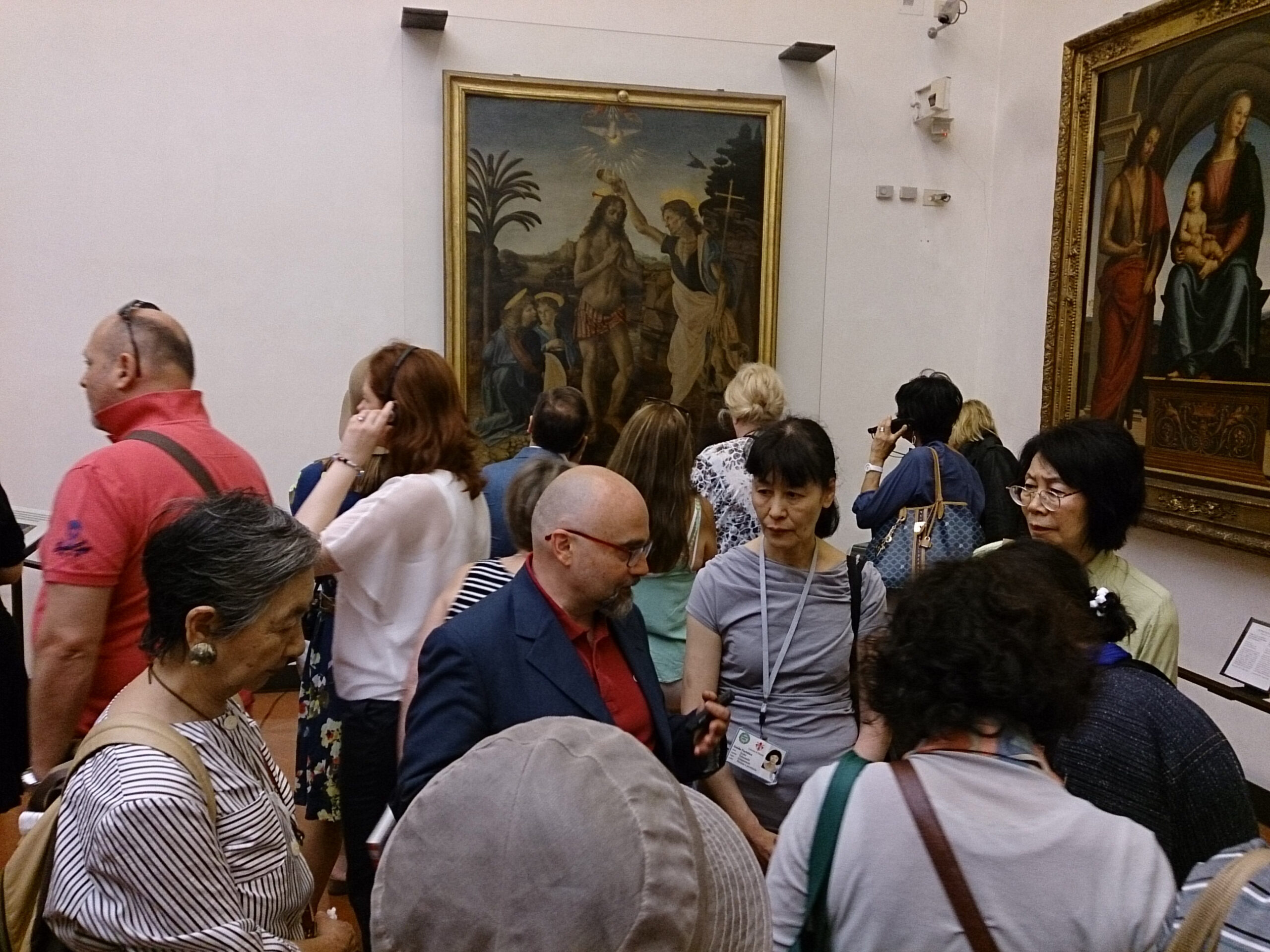
Uffizi Gallery(May17,2015)
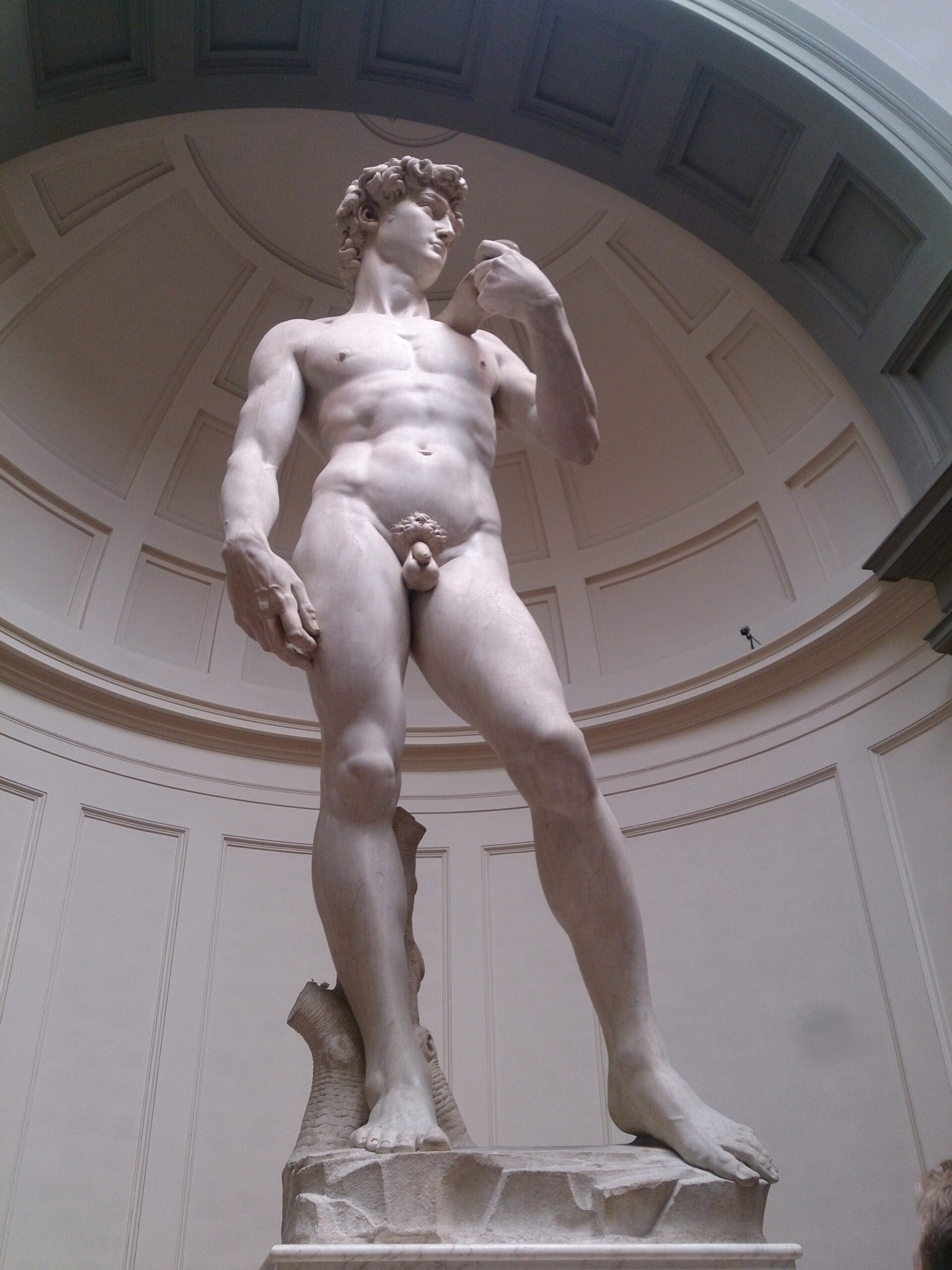
The Galleria dell’Accademia
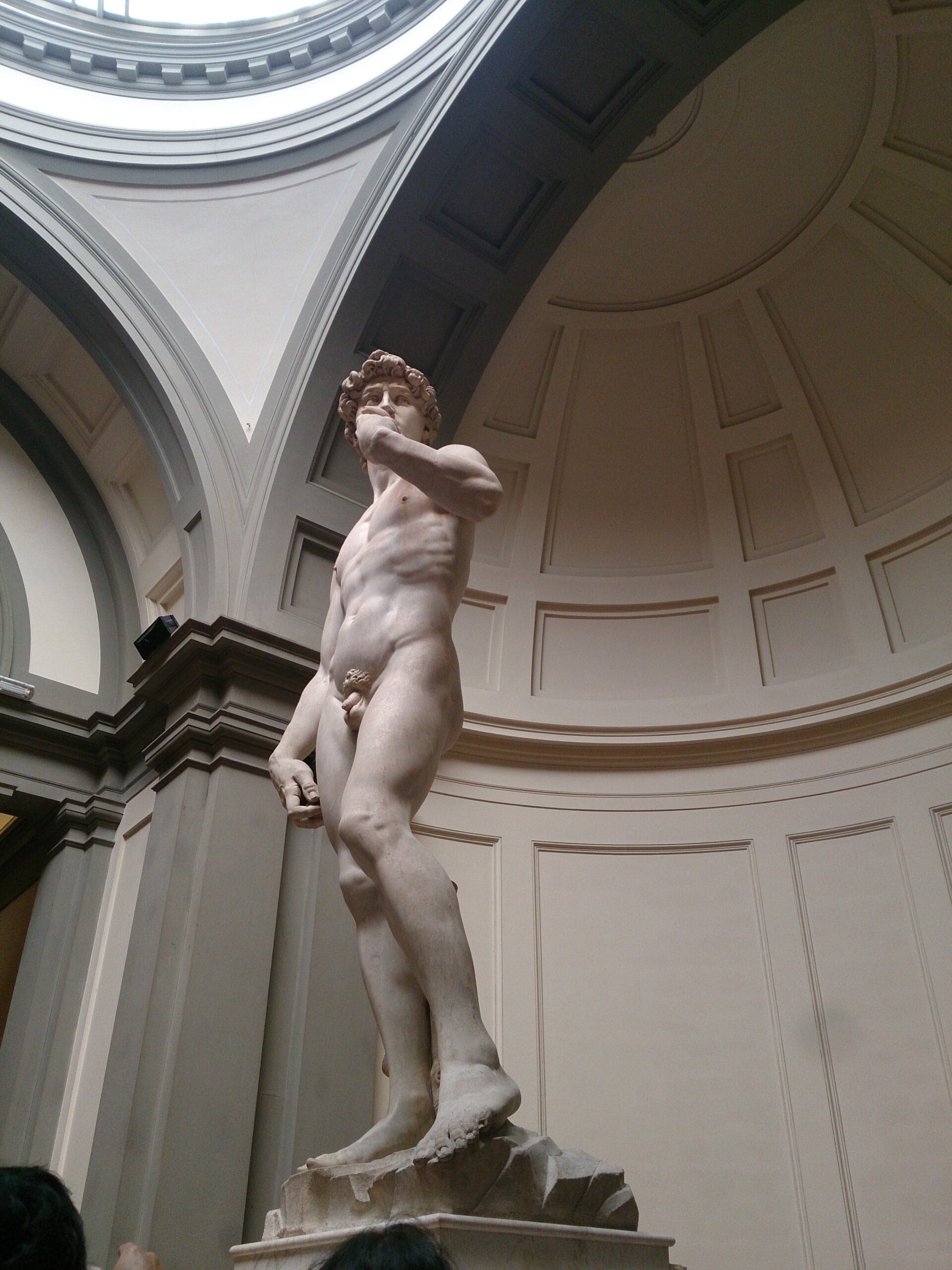
The statue of David
by Michelangelo
(May17,2015)
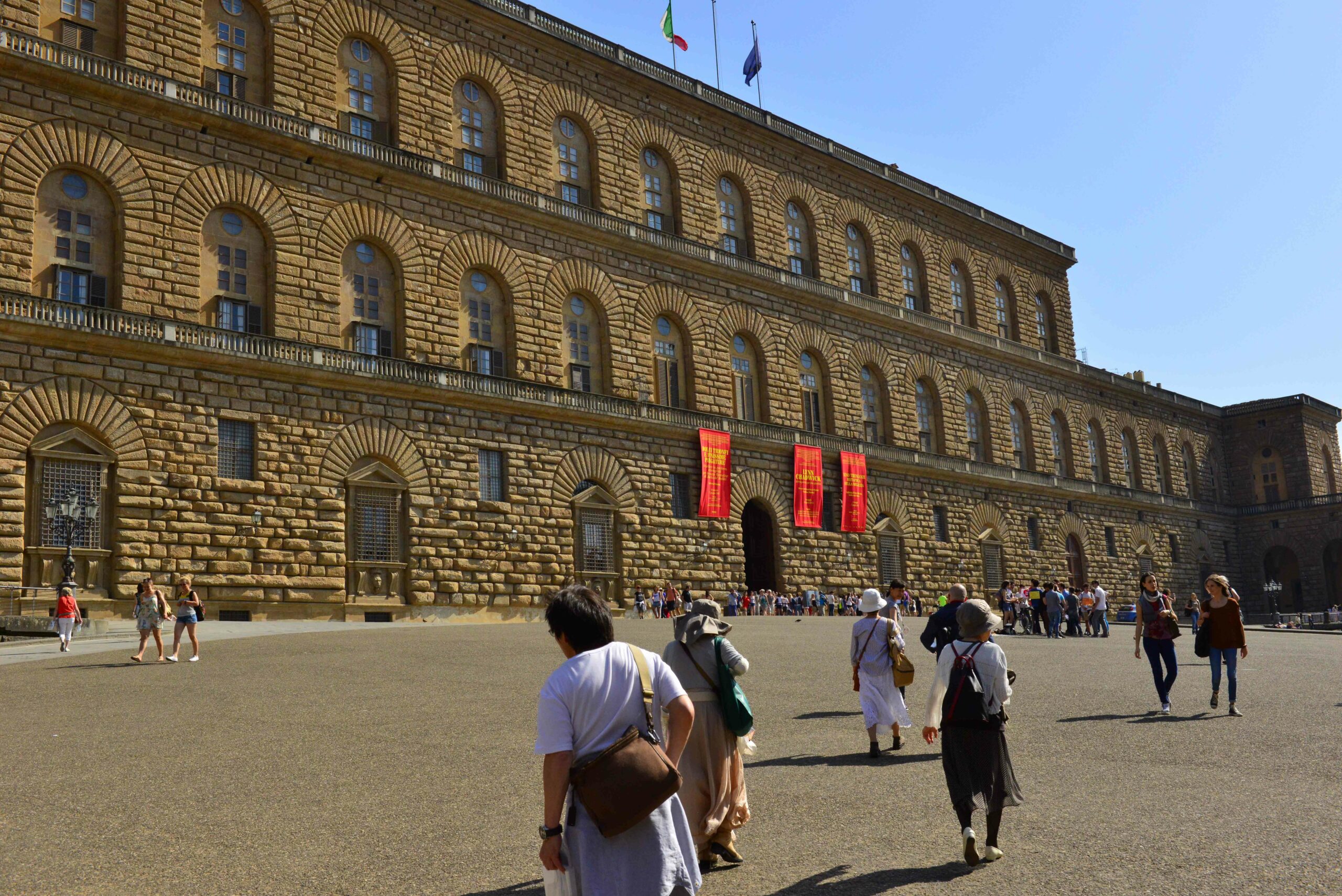
The Palazzo Pitti
(May17,2015)
Period: 15th-19th May 2015
Venue: Museo Civico di Siena
Certification: Comune di Siena
Sponsor: General Incorporated Association World Art and Culture exchange(WAC)
Supervisor: Dr. Piergiacomo Petrioli, Director of branch office in WAC Italy
Nominal Support: Ambasciata del Giappone in Italia
Cooperation: Museo Civico di Siena / Liceo Caselli Siena
Publicity: “bun-ten” FINESSE Co.,Ltd


